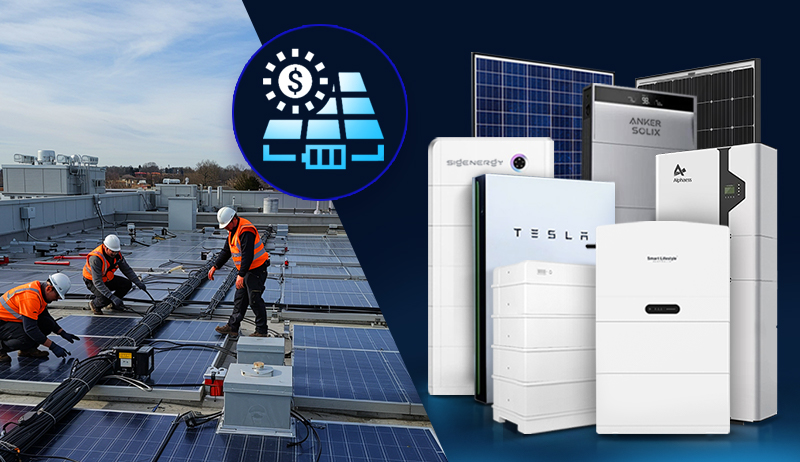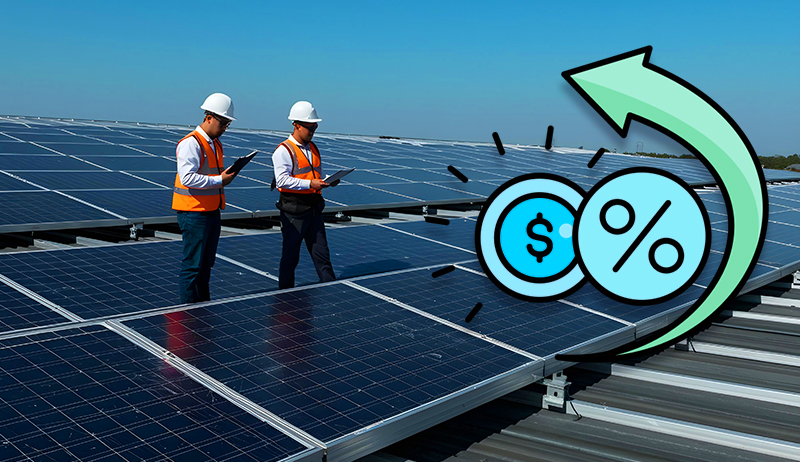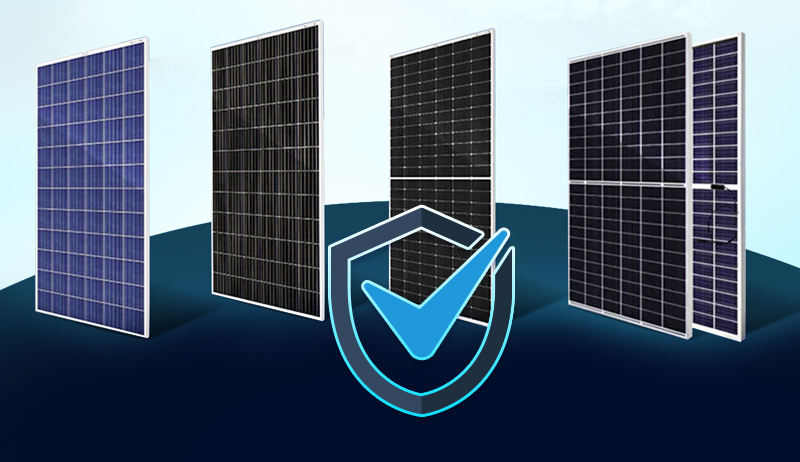Biofuel
Biofuel Production in USA
Biofuel production in the United States has witnessed remarkable growth in recent years, playing a significant role in reducing greenhouse gas emissions and promoting sustainable energy sources.
This article explores the impressive progress of biofuel production in the U.S., highlighting key data and statistics that demonstrate the industry’s impact and potential for a greener future.
Increasing Biofuel Production Capacity
The United States has experienced a substantial increase in biofuel production capacity, bolstered by investments and advancements in technology. As of 2021, the total U.S. ethanol production capacity exceeded 16 billion gallons per year, a significant rise from around 1.6 billion gallons in 2000.
This substantial growth showcases the industry’s ability to meet the country’s growing demand for renewable fuel.
Corn-Based Ethanol Dominance
Corn-based ethanol remains the primary biofuel in the United States. In 2020, the U.S. produced approximately 13.6 billion gallons of ethanol, with nearly 98% of it derived from corn. The extensive corn cultivation and well-established production processes have enabled the industry to achieve a high scale of production, contributing to energy independence and reduced reliance on fossil fuels.
Cellulosic Ethanol’s Rise
The production of cellulosic ethanol, derived from non-food biomass sources, has shown promising growth. In 2020, the United States produced around 36 million gallons of cellulosic ethanol, representing a significant increase compared to previous years. This growth can be attributed to the efforts of companies like POET and other industry stakeholders who have invested in research and development, leading to the commercialization of cellulosic ethanol production technologies.
Biodiesel’s Growing Importance
Biodiesel, another important biofuel, has gained traction as a cleaner alternative to conventional diesel fuel. The United States produced approximately 1.5 billion gallons of biodiesel in 2020, contributing to the country’s efforts to reduce emissions from the transportation sector. Biodiesel production has seen a steady increase, driven by companies like Archer Daniels Midland (ADM) and their investments in biodiesel plants across the nation.
Biofuel production has emerged as a crucial component of the United States’ energy landscape, providing a renewable and environmentally friendly alternative to conventional fossil fuels. Several companies have made significant contributions to biofuel production, playing a vital role in advancing the country’s sustainable energy transition.
Company Contribution
Archer Daniels Midland (ADM):
Archer Daniels Midland (ADM) is a leading company in the biofuel industry, contributing to both ethanol and biodiesel production in the United States.
Ethanol Production: ADM is recognized as one of the largest ethanol producers in the country. The company operates numerous ethanol plants with a combined production capacity of over 1.8 billion gallons per year. This substantial capacity contributes significantly to the overall biofuel production in the United States. ADM’s ethanol production data for the past few years exemplify their impact:
2018: Produced approximately 1.7 billion gallons of ethanol.
2019: Produced approximately 1.8 billion gallons of ethanol.
2020: Produced approximately 1.7 billion gallons of ethanol.
Biodiesel Production: ADM is also involved in biodiesel production, utilizing vegetable oils and animal fats as feedstocks. The company’s biodiesel production capacity exceeds 275 million gallons annually, further bolstering the biofuel industry in the United States.
POET:
POET is a leading biofuel producer, specializing in ethanol production and research and development of advanced biofuel technologies.
Ethanol Production: POET operates multiple ethanol plants across the United States, making significant contributions to the nation’s biofuel production capacity. Here are some key production figures for POET’s ethanol facilities:
2018: Produced approximately 2 billion gallons of ethanol.
2019: Produced approximately 2.1 billion gallons of ethanol.
2020: Produced approximately 2.2 billion gallons of ethanol.
Research and Development: In addition to ethanol production, POET has actively invested in research and development to advance biofuel technologies. Their efforts have focused on developing cellulosic ethanol, derived from non-food biomass sources. POET’s commitment to innovation has contributed to the commercialization and scaling of cellulosic ethanol production, expanding the range of sustainable feedstocks for biofuel production.
Valero Energy Corporation:
Valero Energy Corporation is a significant player in the U.S. biofuel industry, contributing primarily to ethanol production.
Ethanol Production: Valero operates multiple ethanol plants across the country, enhancing the nation’s biofuel production capacity. Here are some key ethanol production figures for Valero:
2018: Produced approximately 1.6 billion gallons of ethanol.
2019: Produced approximately 1.7 billion gallons of ethanol.
2020: Produced approximately 1.8 billion gallons of ethanol.
Valero’s ethanol production facilities play a critical role in meeting the increasing demand for renewable fuel and reducing greenhouse gas emissions in the transportation sector.
Conclusion for Biofuel Production in the United States
The contributions of Archer Daniels Midland (ADM), POET, and Valero Energy Corporation have significantly influenced biofuel production in the United States.
Their substantial investments in ethanol and biodiesel production, as well as research and development, have expanded the nation’s biofuel capacity, reducing reliance on fossil fuels and promoting sustainable energy sources.
With their continued efforts, these companies are playing a vital role in driving the United States’ transition towards a greener and more sustainable energy future.
Biofuel production in the United States has experienced impressive growth, driven by advancements in technology, increased production capacity, and a commitment to a sustainable energy future. The rise of corn-based ethanol, the emergence of cellulosic ethanol, and the growing importance of biodiesel reflect the industry’s diversification and potential. Alongside significant job creation and economic benefits, biofuel production contributes to the reduction of greenhouse gas emissions, providing a greener and more sustainable path for the country’s energy sector.
https://www.exaputra.com/2023/05/biofuel-production-in-united-states.html
Renewable Energy
ACORE Applauds Maryland Gov. Moore’s New Executive Order on Energy Affordability and Reliability
-
Grid Infrastructure -
Policy -
Siting & Permitting Reform -
Technology -
Press Releases
ACORE Applauds Maryland Gov. Moore’s New Executive Order on Energy Affordability and Reliability
ACORE Applauds Maryland Gov. Moore’s New Executive Order on Energy Affordability and Reliability
FOR IMMEDIATE RELEASE
Dec. 19, 2025
WASHINGTON, D.C. — The American Council on Renewable Energy (ACORE) issued the following statement from ACORE President and CEO Ray Long in response to Governor Wes Moore’s announcement of new initiatives to build an affordable and reliable energy future for Maryland.
“ACORE applauds Gov. Wes Moore for setting forth a new series of energy initiatives that seek to stabilize energy bills while ensuring grid reliability and efficiency for Marylanders. In particular, ACORE commends key provisions in the order to increase the deployment of advanced transmission technologies; streamline the siting and permitting of high-voltage transmission, energy storage, and other infrastructure; advance wholesale market reforms; and more. As the country enters a new era of electricity demand, initiatives like Gov. Moore’s will facilitate significant progress toward building a modern and reliable grid needed to maintain economic competitiveness and keep the lights on,” said ACORE President and CEO Ray Long.
###
ABOUT ACORE
For over 20 years, the American Council on Renewable Energy (ACORE) has been the nation’s leading voice on the issues most essential to clean energy expansion. ACORE unites finance, policy, and technology to accelerate the transition to a clean energy economy.
For more information, please visit http://www.acore.org.
Media Contacts:
Stephanie Genco
Senior Vice President, Communications
American Council on Renewable Energy
communications@acore.org
The post ACORE Applauds Maryland Gov. Moore’s New Executive Order on Energy Affordability and Reliability appeared first on ACORE.
https://acore.org/news/acore-statement-on-gov-wes-moores-new-energy-executive-order/
Renewable Energy
Meat–It’s What’s for Dinner, if You Don’t Care about the Animals or the Planet
 We often hear meat-eaters say things like, “If beef isn’t good, why do the manufacturers of plant-based burgers try so hard to make their burgers taste like real meat?”
We often hear meat-eaters say things like, “If beef isn’t good, why do the manufacturers of plant-based burgers try so hard to make their burgers taste like real meat?”
There is no doubt that cow and pig meat tastes and smells great; every vegan on Earth will tell you that.
The problem lies elsewhere, in a) the environmental impact of clearing the rainforests to make room for more cows, and b) the cruelty inherent in factory farming and the slaughtering of the animals.
Meat–It’s What’s for Dinner, if You Don’t Care about the Animals or the Planet
Renewable Energy
FAQs: Your Most Common Commercial Solar Questions Answered
The post FAQs: Your Most Common Commercial Solar Questions Answered appeared first on Cyanergy.
https://cyanergy.com.au/blog/faqs-your-most-common-commercial-solar-questions-answered/
-
Climate Change4 months ago
Guest post: Why China is still building new coal – and when it might stop
-
Greenhouse Gases4 months ago
Guest post: Why China is still building new coal – and when it might stop
-
Climate Change2 years ago
Spanish-language misinformation on renewable energy spreads online, report shows
-

 Greenhouse Gases2 years ago
Greenhouse Gases2 years ago嘉宾来稿:满足中国增长的用电需求 光伏加储能“比新建煤电更实惠”
-
Climate Change Videos2 years ago
The toxic gas flares fuelling Nigeria’s climate change – BBC News
-

 Climate Change2 years ago
Climate Change2 years ago嘉宾来稿:满足中国增长的用电需求 光伏加储能“比新建煤电更实惠”
-

 Carbon Footprint2 years ago
Carbon Footprint2 years agoUS SEC’s Climate Disclosure Rules Spur Renewed Interest in Carbon Credits
-
Climate Change2 years ago
Why airlines are perfect targets for anti-greenwashing legal action













 Full energy assessment
Full energy assessment



